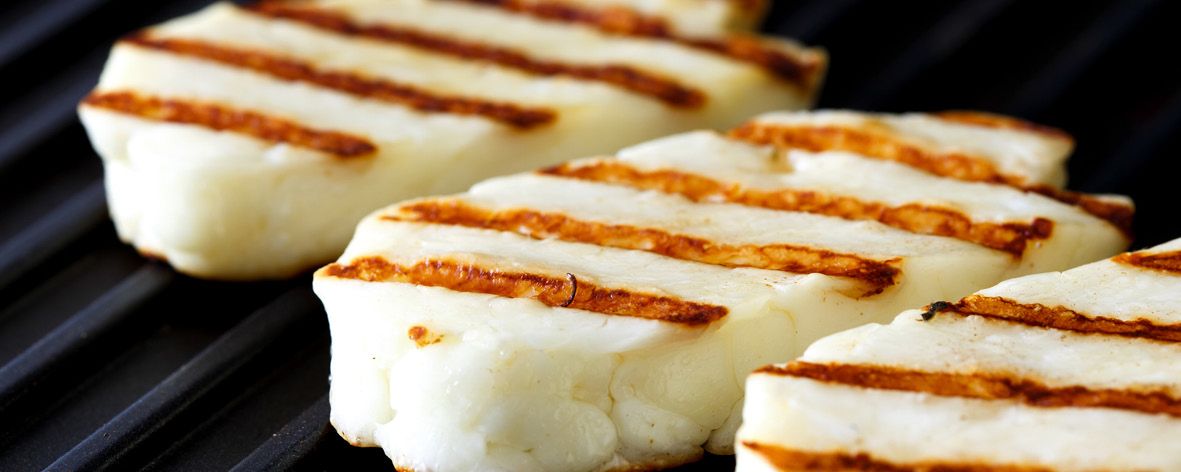All you need to know about ... Halloumi

Halloumi was originally created by Cypriot shepherds as a unique and very practical way of preserving surplus milk during the spring, but today most examples are made throughout the year using cows’ milk.
World renowned cheese specialist Will Studd came across an authentic handmade halloumi in Cyprus and immediately fell for its delicious texture and flavour, which is quite different to its mass-produced industrial cousins.
Aphrodite Halloumi is one of the few examples of halloumi still formed into pockets by hand, the traditional old-fashioned way and is made from a combination of goats’ and ewes’ milk.
Ewes’ milk is high in fat and this is responsible for the delicious brown crust that forms when the cheese is grilled or fried, whilst the goats’ milk provides a firm yet elastic texture, and a subtle lingering lemony tang.
Will Studd Aphrodite Halloumi lends itself to a variety of cooking techniques. Here’s our guide on how to cook it perfectly.
Frying
The easiest method of cooking halloumi is to fry it in a non-stick frying pan. Don’t use oil, as dry-frying creates a beautiful crust on the outside of the cheese, whilst leaving the inside soft.
Baking
Add slices of halloumi to an ovenproof dish and drizzle with a little olive oil and your favourite herbs and spices. Bake in a 180C oven for 10-15 minutes. The flavours of the herbs and spices will infuse through the cheese while it is cooking.
Grilling
Rub the outside of the halloumi with olive oil and cook quickly on the barbecue.
Skewer it
Halloumi is the perfect cheese for skewers because it can be cut into chunks or strips and threaded easily onto skewers. Try our recipe for Spicy halloumi skewers with chilli.

